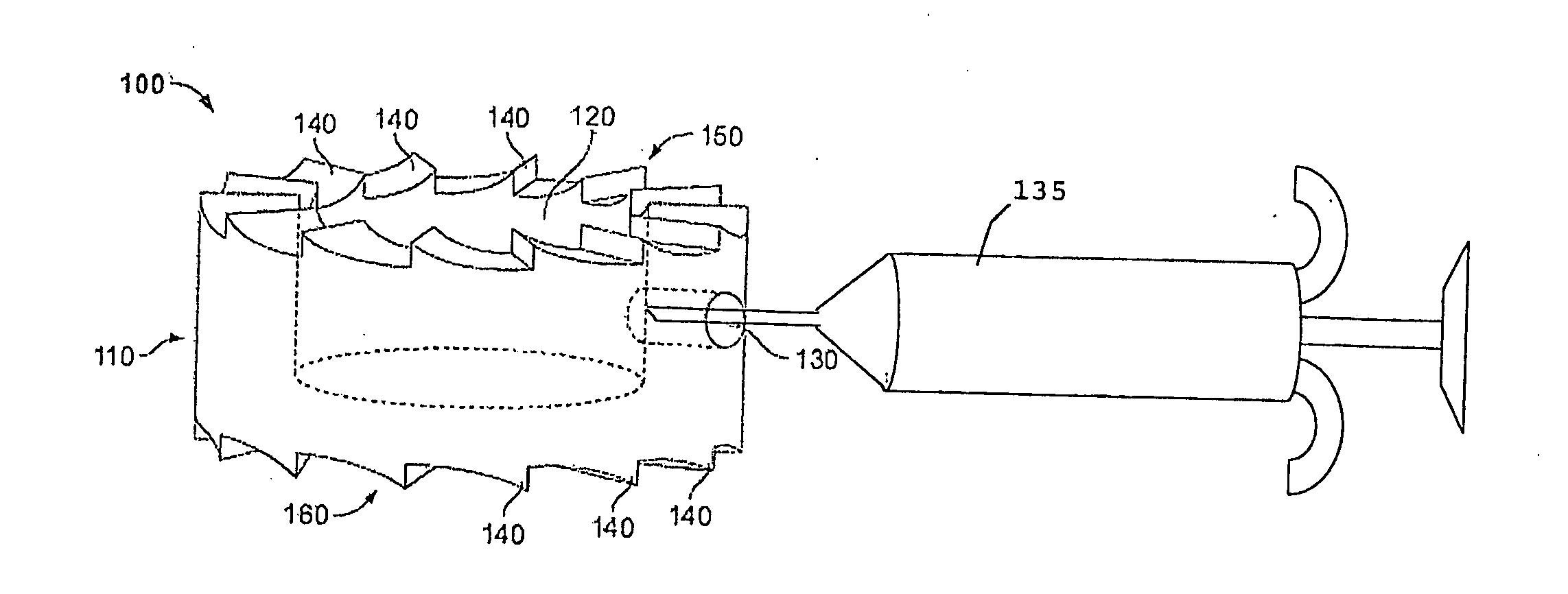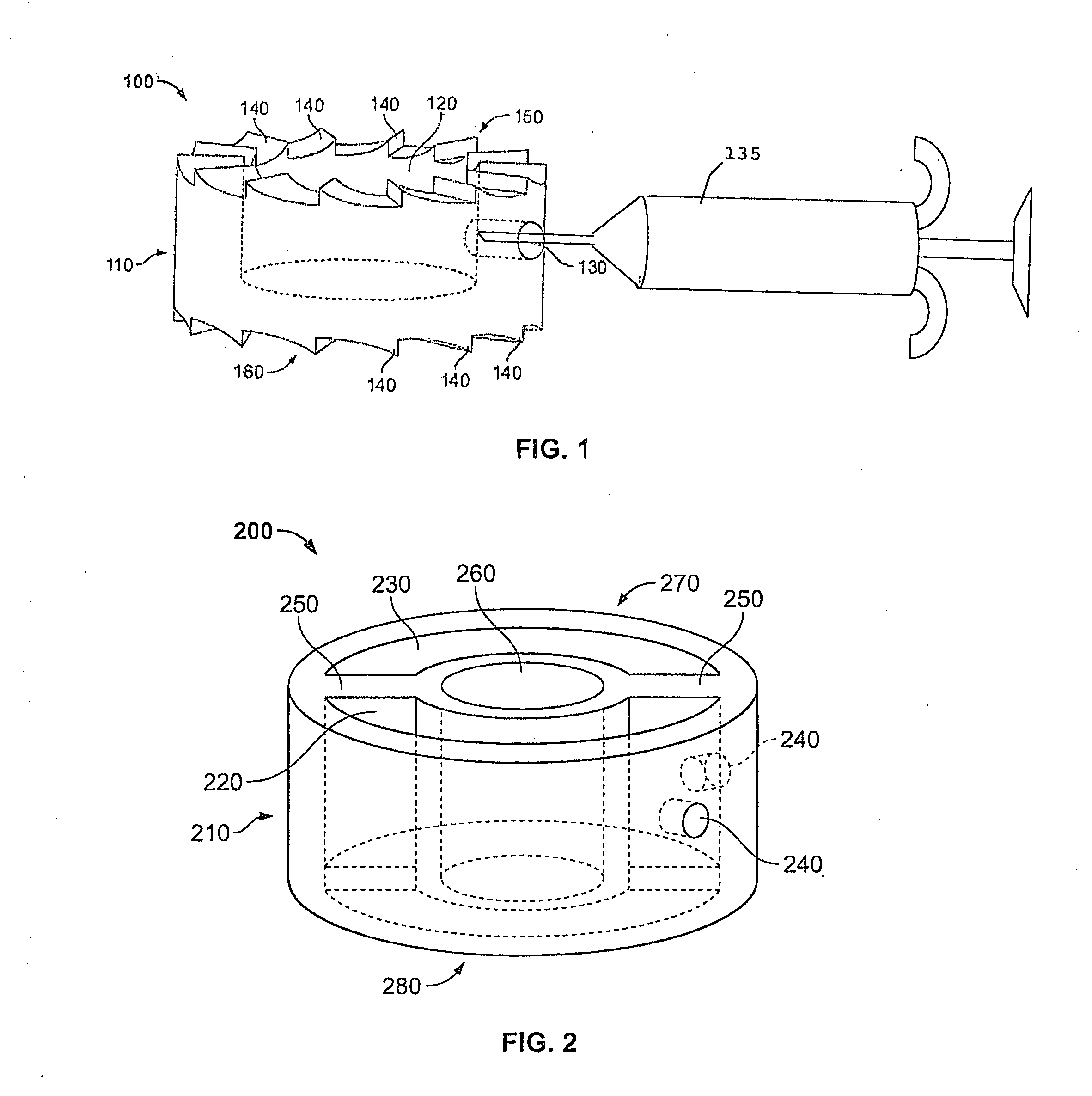Fusion device, systems and methods thereof
- Summary
- Abstract
- Description
- Claims
- Application Information
AI Technical Summary
Benefits of technology
Problems solved by technology
Method used
Image
Examples
Embodiment Construction
[0038]The spinal fusion device of the invention is used to maintain disc height between two adjacent vertebral bodies while bone forms between the two vertebrae. The device permits injection of cement into one or more hollow cores in the fusion device. The cement fills the one or more hollow cores and engages the vertebral body surfaces located on one or both sides of the implanted device. Once the cement has set, independent motion of the vertebrae is substantially or wholly eliminated. The device, systems and methods of the invention provide for reduced time for fixation and improved stability of the vertebral motion segment, thereby reducing or eliminating the need for adjuvant fixation. By reducing or eliminating the drilling, tapping or insertion of screws associated with adjuvant fixation, the invention provides for shorter spinal fusion procedures. In some embodiments, as boney spinal fusion occurs, the cement will resorb and act as a continuous scaffold for tissue ingrowth w...
PUM
| Property | Measurement | Unit |
|---|---|---|
| Angle | aaaaa | aaaaa |
| Pressure | aaaaa | aaaaa |
| Flow rate | aaaaa | aaaaa |
Abstract
Description
Claims
Application Information
 Login to View More
Login to View More - R&D
- Intellectual Property
- Life Sciences
- Materials
- Tech Scout
- Unparalleled Data Quality
- Higher Quality Content
- 60% Fewer Hallucinations
Browse by: Latest US Patents, China's latest patents, Technical Efficacy Thesaurus, Application Domain, Technology Topic, Popular Technical Reports.
© 2025 PatSnap. All rights reserved.Legal|Privacy policy|Modern Slavery Act Transparency Statement|Sitemap|About US| Contact US: help@patsnap.com



